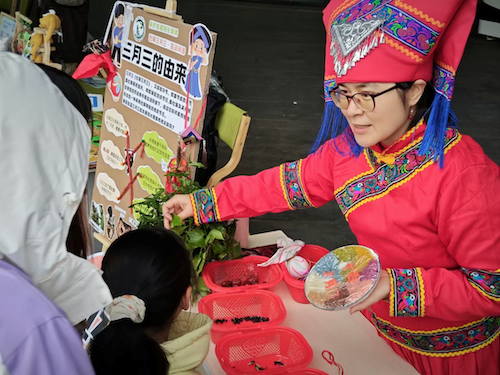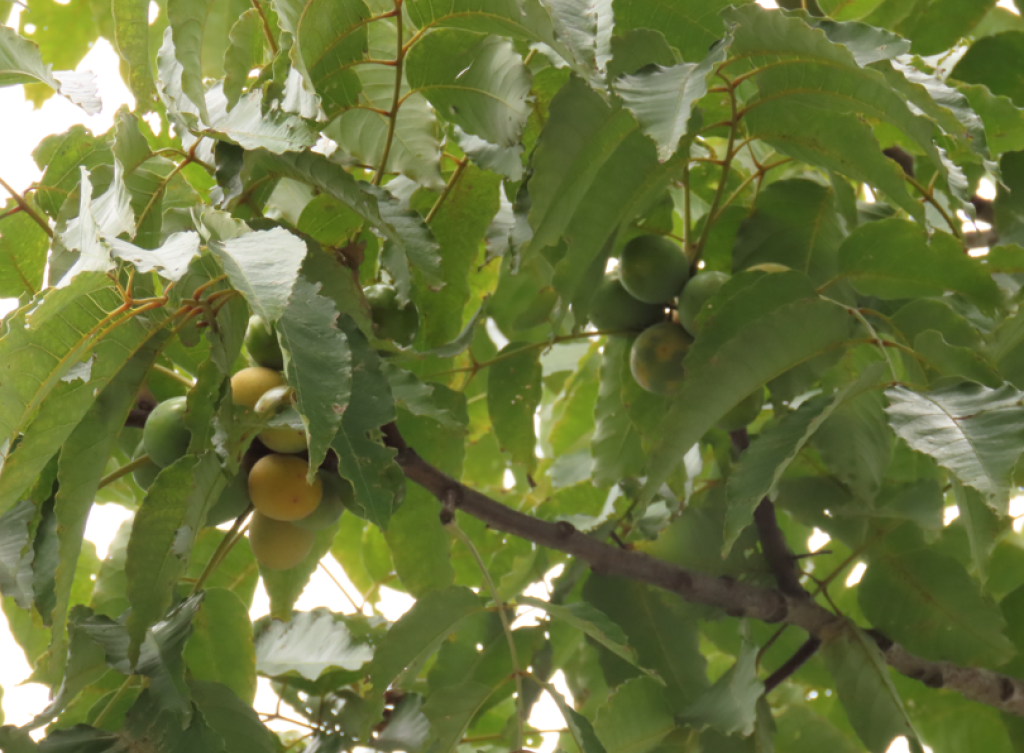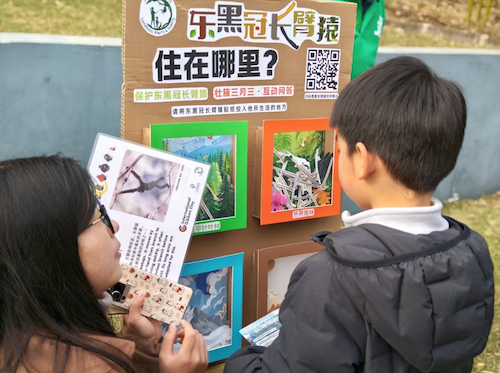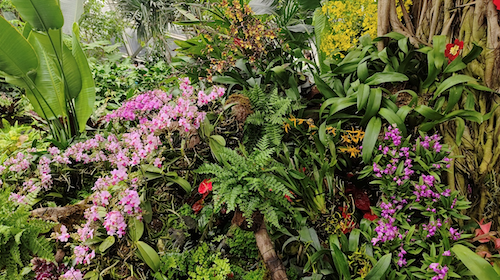“Listen” to the Call of Cao Vit Gibbon in Shanghai Chenshan Botanical Garden
Apr.3.2025
When it’s the “March 3rd festival” (the most important traditional festival of the Zhuang people, featuring the beautiful Songs), Shanghai Chenshan Botanical Garden was filled with a different kind of “gibbon songs”. Shanghai Roots & Shoots, together with Shanghai Chenshan Botanical Garden, launched the “Listen to the Call of Gibbons” charity event, featuring the local people’s wisdom of utilizing the nature resources in daily life, which is a brand-new perspective for the visitors to learn about biodiversity conservation.
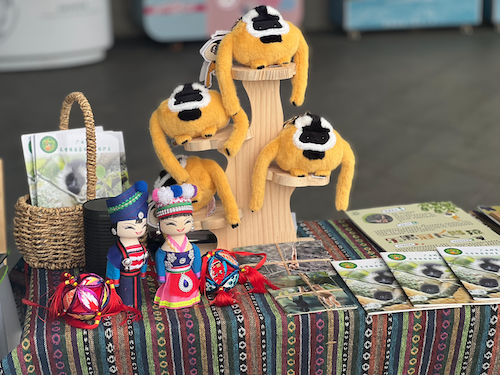

Entering the park, the five-color glutinous rice handmade by the volunteer at the main exhibition stand smells so good. These plants from the mountains represent the ancient wisdom of balancing between country life and nature. Next to it is an image of a mother and child Cao Vit Gibbon leaping between the treetops, drawing people’s attention to the jungles of Guangxi thousands of miles away. What kind of natural environment gave birth to these lovely creatures? And what is the reason that the Cao Vit Gibbon, which had been “extinct in the wild”, has returned? Visitors on site will learn about everything behind this through interactive games and nature walks.
As it’s the spring in the botanic garden, the new leaves of the Chinese jujube tree are blooming. The tree is a key species for restoring the habitat of gibbons. During the food shortage period in autumn and winter, the ripe fruits of Chinese jujube (sweet and sour) will become a seasonal food supplement for the Cao Vit gibbon. On the karst mountains in Guangxi, the forest with Chinese jujube trees only will be difficult to maintain due to the lack of diversity. In the naturally regenerated forests, trees, shrubs, and vines are intertwined. It is this “living web” that can support every delicate creature like the gibbon.
There is a patch of Hare’s tail grass at another corner. These plants, which need to be pruned regularly in Chenshan Botanical Garden, can grow into a five-meter-high “green wall” in Guangxi. The project manager pointed to a newly emerged sapling and explained: “In the karst landscape, the saplings must be nurtured like babies in the first three years after afforestation, otherwise they will soon be taken over by the fast growing grass.” This herbaceous plant that has evolved super competitiveness is a normal in the ecosystem, but in degraded habitats, they have become a barrier to afforestation. This makes people wonder: the balance of nature is so delicate that the loss of any link may trigger a chain reaction.
When visitors walk into the misty greenhouse, they are instantly placed in a simulated tropical habitat. On the branches of tall banyan trees, ferns and orchids stretch their roots in the air. This miniature rainforest world fully presents the spatial structure on which gibbons depend for survival – banyan trees provide food source throughout the year, vegetation at different levels forms corridors, and some local plants are a good medicine for local people to treat coughs and the materials for making “March 3th Festival” glutinous rice cakes. Here, biodiversity is no longer an abstract concept: it is the morning mist flowing between the fingers of gibbons, the magical plants sung in Zhuang folk songs, and the key keeping the natural balances.
As the sun sets, tourists participating in the “Nature Walk” linger under the banyan tree. The program manager introduced that, “The Cao Vit Gibbon can remember the location of every fruit-bearing tree within a radius of five kilometers. Their wisdom is far beyond our imagination.” During the event, everyone can feel that every creature is an indispensable node on the network of nature, and the story of the Cao Vit Gibbon is the most vivid annotation of it. We are both the beneficiaries of this network and should be its guardians. And the first step to protect is to understand them. We all hope that one day, the gibbon songs will echo in the mountains, and all living things will coexist in harmony!
Our sincere thanks to Shanghai Chenshan Botanical Garden and volunteers for their support! If you are interested in learning more about the “Cao Vit Gibbon Habitat Restoration Project”, click here for details.





